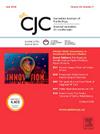静脉-动脉体外膜氧合(V-A ECMO)治疗成人感染性休克:希望还是炒作?
IF 5.8
2区 医学
Q1 CARDIAC & CARDIOVASCULAR SYSTEMS
引用次数: 0
摘要
脓毒症休克与显著的发病率和死亡率相关,但一部分脓毒症患者会经历一过性心肌抑制,称为脓毒症相关心肌病,这明显增加了观察到的死亡率。虽然静脉-动脉体外膜氧合(V-A ECMO)可以为医学上难治性脓毒症提供暂时的机械循环支持,但V-A ECMO治疗脓毒症患者的生存率历来较差。对V-A ECMO相关的许多潜在危害的担忧,包括进一步播下感染、炎症加剧和血管麻痹、出血、血栓形成和远端肢体缺血,进一步降低了对败血症的热情。然而,可能有一部分严重败血症患者对药物治疗难治性,他们可能从V-A ECMO中获益。本文综述了脓毒症相关心肌病的病理生理学、诊断和治疗,然后重点介绍了V-A ECMO在这类患者中的应用。本文总结了V-A ECMO治疗败血症相关心肌病的结果,然后讨论了优化这些重症患者预后的重要管理考虑因素,最后介绍了V-A ECMO治疗败血症的利弊。利用现有的已发表的数据和当前最先进的实践,我们得出结论,对于高选择性的低射血分数败血症相关心肌病和顽固性灌注不足的患者,在适当配备的医疗系统中,V-A ECMO可能是一种合理的考虑,但在败血症休克患者普遍推荐V-A ECMO之前,需要更多的支持性数据。本文章由计算机程序翻译,如有差异,请以英文原文为准。
Venoarterial Extracorporeal Membrane Oxygenation in Adults With Septic Shock: Hope or Hype?
Septic shock is associated with significant morbidity and mortality, but a subset of patients with sepsis will experience transient myocardial depression, termed sepsis-associated cardiomyopathy, which markedly increases observed mortality. Although venoarterial extracorporeal membrane oxygenation (VA-ECMO) can provide temporary mechanical circulatory support in medically refractory sepsis, survival in patients with VA-ECMO for sepsis has been historically poor. Concerns regarding numerous potential harms associated with VA-ECMO, including further seeding of infection, exacerbation of inflammation and vasoplegia, bleeding, thrombosis, and distal limb ischemia have further tempered enthusiasm in the setting of sepsis. However, there may be a subset of patients with profound sepsis refractory to medical therapy that could potentially derive some benefit from VA-ECMO. This review provides an overview of the pathophysiology, diagnosis, and treatment of sepsis-associated cardiomyopathy and then focuses on the utility of VA-ECMO in this patient population. A summary of the scant published outcomes of VA-ECMO in sepsis-associated cardiomyopathy is provided, followed by a discussion of important management considerations to optimize outcomes in these extremely sick patients, and finally the pros and cons of VA-ECMO in the setting of sepsis are presented. Using available published data and current state-of-the-art practice, we conclude that VA-ECMO may be a reasonable consideration in highly selected patients with low ejection fraction sepsis-associated cardiomyopathy and refractory hypoperfusion in appropriately equipped health care systems, but more supportive data are required before VA-ECMO can be generally recommended in patients with septic shock.
求助全文
通过发布文献求助,成功后即可免费获取论文全文。
去求助
来源期刊

Canadian Journal of Cardiology
医学-心血管系统
CiteScore
9.20
自引率
8.10%
发文量
546
审稿时长
32 days
期刊介绍:
The Canadian Journal of Cardiology (CJC) is the official journal of the Canadian Cardiovascular Society (CCS). The CJC is a vehicle for the international dissemination of new knowledge in cardiology and cardiovascular science, particularly serving as the major venue for Canadian cardiovascular medicine.
 求助内容:
求助内容: 应助结果提醒方式:
应助结果提醒方式:


